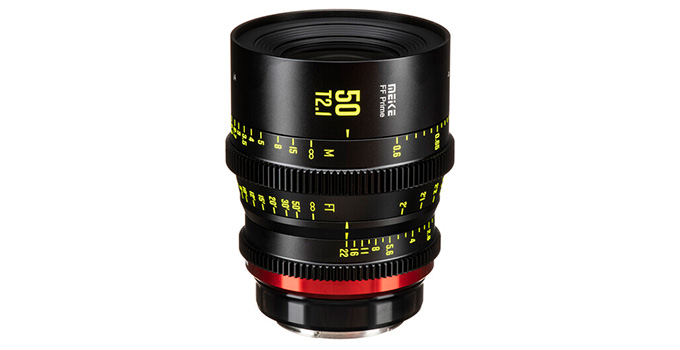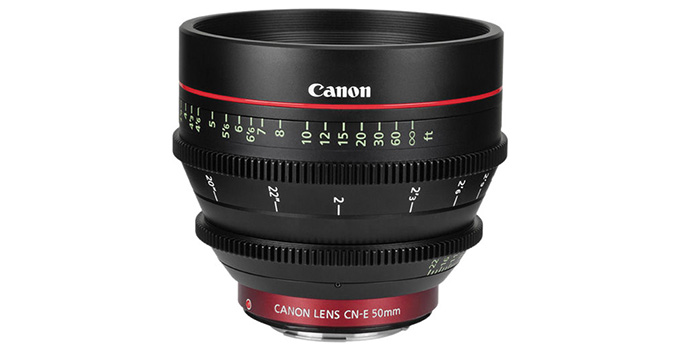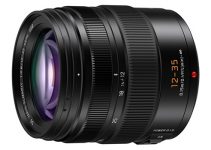Cinema lenses have become widely available and with that availability comes a wide range of options. That wide range has come to pricing as well. Today, we have seemingly quality cinema primes coming in at anywhere from $1,000 to tens of thousands of dollars. Even great glass is relatively affordable these days with people like Canon offering lenses that independent operators can actually own.
When you are shopping for a set of cine lenses the price range can be alarming. Is that Canon CN-E glass actually worth 4x the cost of the Meike set? If you are trying to answer that specific question you are in luck as Caleb from DSLR Video Shooter compared those two options.
There are a few differences between the sets for sure, starting with the focal length options. Meike offers 24mm, 35mm, 50mm, 85mm, and 105mm today with a 16mm and 135mm coming in the future. Canon has a few more options in the set of 14mm, 20mm, 24mm, 35mm, 50mm, 85mm, and 135mm ready for action.
For apertures Meike opted to match everything to T2.1. Canon has a bit more variety with some lenses, the 50mm and 85mm, getting as fast as T1.3 while most sit at T1.5 and a couple at the far wide and far tele get a little slower.
Size is a significant difference. Weights are actually somewhat similar, but the Meike lenses are significantly smaller in diameter and are a more compact package overall.
Each set does do a great job of keeping the size similar across the set. The control rings are perfectly matched on both. Canon does have some slight variations in length at the wide and long ends (14mm and 135mm).

Image Credit: Meike
Canon does offer focus and aperture markings on both sides of the lenses while Meike only put them on one. Also, the Canon lenses are designed to be readable even when you are standing behind the camera. Meike’s are to the side and you’ll have to maybe peek your head over to get a clear look.
Both lenses do feel good with smooth operation and solid construction. In the box you will find some slight variations. Meike includes some labeled lens caps, an optional support for the bottom of each lens, shims, and the necessary tools.
Mounts are another variable. Canon uses their own EF mount, obviously, though it does benefit from having communication with the camera. Meike offers a variety of options (ARRI PL, Canon EF, Canon RF, Sony E, Leica L) and they can be replaced by the user.
Price is probably the most important difference for most of us. The Canon set is gonna cost you over $20,000. Meike is a deal at around $5,000.
Getting into image quality we can identify some other differences. Starting at 24mm you can see that Canon is a clear winner. At 35mm Canon has the edge in the center, but Meike beats it out towards the corners. The 50mm and 85mm are super close, though Caleb gives it to Meike thanks to slightly better corner performance.
Moving on to breathing. The 24mm is basically a tie. The 35mm has Meike win out. 50mm is another tie. And then 85mm goes to the Meike. Interesting results.

Image Credit: Canon
Distortion is not really an issue. The two sets were essentially identical when compared to their counterparts. Vignetting isn’t an ideal comparison. The tests were done at T2.1, which is wide open for Meike and stopped down for most of the Canons. In all these cases the Canon’s look better with the 50mm and 85mm being exceptional.
It’s a different story for chromatic aberration. Meike beats Canon at 24mm and 35mm. The 50mm and 85mm tie here.
Bokeh is going to be very subjective. The Meike’s appear to have a red tinge while Canon has green. I’m just going to let you check this set out yourself, both are subjectively good and it will come down a bit to preference.
There’s no objective winner here. Flaring is similar since these types of lenses are designed with a “look” so they aren’t eliminating flare.
Color science is an area to check out. Canon definitely nails it on consistency across the entire line. Those coatings and ensuring they match can explain a lot of the cost. Meike doesn’t do as well and if that consistency is important to you then the extra cost might be worth it.
Still, for the money the Meike’s are delivering a gorgeous image. There are obviously some other benefits for the Canon lenses, especially that they can get faster, but for an independent operator without that large of a budget the Meike lenses will do the job and do it well.
What do you think about this comparison?
[source: DSLR Video Shooter]
Order Links:
- Meike 24mm T2.1 FF-Prime Cine Lens (B&H)
- Meike 35mm T2.1 FF-Prime Cine Lens (B&H)
- Meike 50mm T2.1 FF-Prime Cine Lens (B&H)
- Meike 85mm T2.1 FF-Prime Cine Lens (B&H)
- Meike 105mm T2.1 FF-Prime Cine Lens (B&H)
- Canon CN-E 14mm T3.1 L F Cinema Prime Lens (B&H)
- Canon CN-E 20mm T1.5 L F Cinema Prime Lens (B&H)
- Canon CN-E 24mm T1.5 L F Cinema Prime Lens (B&H)
- Canon CN-E 35mm T1.5 L F Cinema Prime Lens (B&H)
- Canon CN-E 50mm T1.3 L F Cinema Prime Lens (B&H)
- Canon CN-E 85mm T1.3 L F Cinema Prime Lens (B&H)
- Canon CN-E 135mm T2.2 L F Cinema Prime Lens (B&H)
Disclaimer: As an Amazon Associate partner and participant in B&H and Adorama Affiliate programmes, we earn a small comission from each purchase made through the affiliate links listed above at no additional cost to you.


